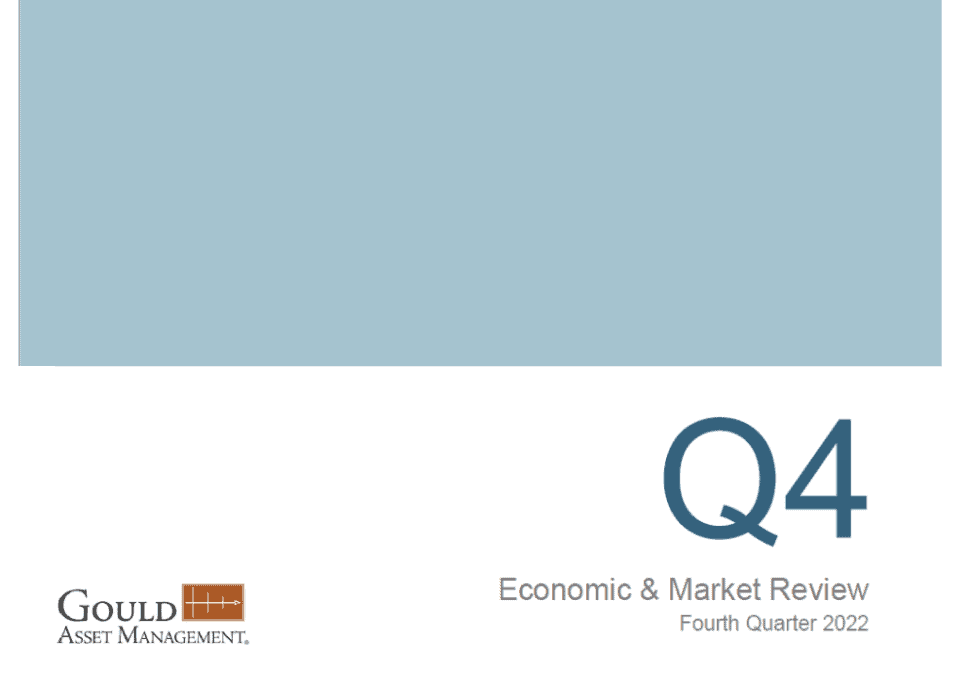by The Gould Asset Management Team
Note: This post is an excerpt from Gould Asset Management’s Economic and Market Review for the Fourth Quarter of 2022. The excerpt is posted here for the benefit of our blog subscribers.
Stocks Pare Losses in Q4, Capping Rocky Year for Markets
US stocks rallied in the fourth quarter amid signs of moderating inflation and hope that the Federal Reserve’s pace of rate hikes might soon slow. US large cap stocks (the S&P 500 index) rose 7.6% in Q4 but it was not nearly enough to make up for earlier losses in 2022, a year that saw high inflation, sharply rising interest rates, and war in Ukraine. Accordingly, US large caps declined 18.1% in 2022, the fourth worst year for US stocks since the 1940s.
The Industrial and Materials sectors performed best in the fourth quarter, rising 19.2% and 15.1% respectively in Q4, while Utilities stocks took the top prize for the year, rising 1.6% in 2022. Aside from the Energy sector (see discussion in our alternatives section), Utilities were the only sector to post a positive return in 2022, illustrating what a challenging year it was for US stocks. The Consumer Discretionary and Technology sectors were particularly hard hit, falling 36.2% and 27.6% on the year.
Mid and small cap US stocks (the Wilshire 4500 index) did even worse than large caps, rising 5.3% in Q4 but still falling 23.9% for the full year. Markets believe slowing economic growth or outright recession will disproportionately impact mid and small cap companies.
After a rough first three quarters of the year, international stocks rebounded strongly in Q4, with the MSCI EAFE index jumping 17.4%, as the US dollar weakened and inflation pressures
abated. For the year, international developed stocks fell 14.0%—outperforming US stocks in a calendar year for the first time since 2017. Emerging markets stocks also had a strong quarter, with the MSCI Emerging Markets index rising 9.8%, cutting year-to-date losses to 19.7%. Chinese stocks (down over 20% in 2022) weighed on returns, as they comprise about one-third of emerging market indexes.
Market volatility, as measured by the VIX volatility index, subsided in the fourth quarter, with the index dropping from 31 at the start of October to 21 by year-end as markets rallied. A reading of 21 is close to the long-term average for VIX, suggesting market volatility may be returning to normal after the tumult of 2022.
To continue reading, please see our entire Economic and Market Review.

